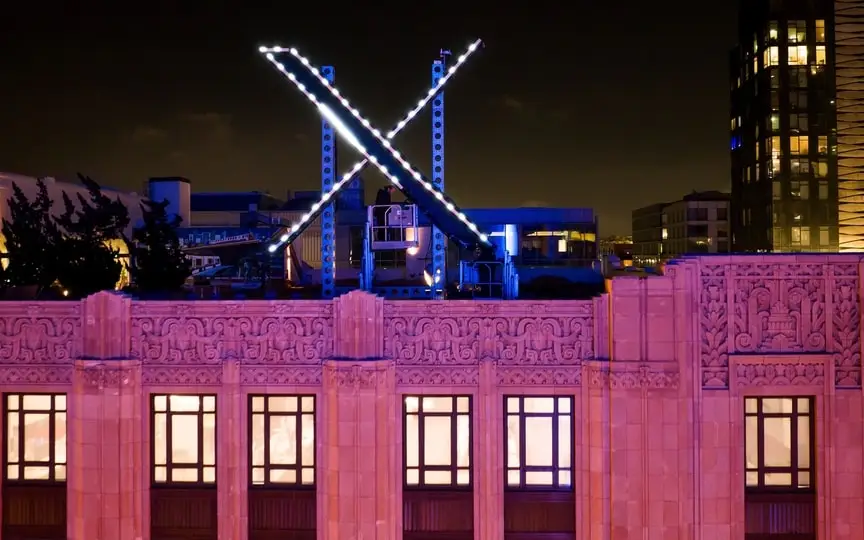One Year After Acquisition, Twitter Struggles with Misinformation, Advertising Revenue, and User Decline
Elon Musk, the billionaire and recent owner, made a significant entrance into Twitter’s San Francisco headquarters a year ago. He brought along a white bathroom sink and a smile, promptly dismissed the CEO and other high-ranking officials, and initiated a complete overhaul of the social media platform, resulting in its current identity as X.
X looks and feels somewhat like Twitter, but the more time you spend with it, the more it becomes clear that it’s only an approximation. Musk has dismantled Twitter, the core features of what makes Twitter — its name and blue bird logo, its verification system, its trust and security advisory group. Not to mention content moderation and hate speech enforcement.twitter
We are now on WhatsApp. Click to join.
He also laid off, laid off, or lost most of his workforce — the engineers who keep the site running, the moderators who keep it from degenerating into hate, the managers responsible for making the rules and enforcing them.
According to longtime Twitter followers, the result has been the end of the platform’s role as an imperfect but useful place to find out what’s going on in the world. What X will become, and whether Musk can achieve his goal of making it the “everything app” that everyone uses, is as unclear as it was a year ago.
“Musk has failed to make a single significant improvement to the platform and is no closer to his vision of ‘everything is an app’ than he was a year ago,” said Insider Intelligence analyst Jasmine Enberg. “Instead, X has driven away users, advertisers, and now it has lost its primary value proposition in the social media world: to be a central news hub.”
As one of the platform’s most popular and prolific users even before he bought the company, Musk had a unique experience on Twitter that was vastly different from that of regular users. But many of the changes he introduced to X were based on his own impressions of the site — in fact, he even asked his millions of followers for advice on how to run it (they said he should quit).
“Musk’s treatment of the platform as a tech company that he could remake in his vision of a social network fueled by people and advertising dollars has been the single biggest cause of Twitter’s demise,” Enberg said.
The blue checkmarks that indicated the person or institution behind the account was who they said they were — a celebrity, an athlete, a reporter from an international or local publication, a nonprofit organization — now just show someone paying $8 a month for a subscription service. which elevates their posts above unverified users. It is these payment accounts that have been found to spread false information on the platform, which is often confirmed by its algorithms.
On Thursday, for example, a new report from the left-leaning nonprofit Media Matters found that several blue-checked X accounts with tens of thousands of followers claimed the Maine mass shooting was a “false flag” orchestrated by the government. Investigators also found such accounts spreading misinformation and propaganda about the war between Israel and Hamas — so much so that the European Commission issued a formal, legally binding information request to X regarding its handling of war-related hate speech, misinformation and violent terrorist content. .
Ian Bremmer, a noted foreign policy expert, published in X this month that the level of disinformation about the war between Israel and Hamas “algorithmically promoted” on the platform “is unlike anything I’ve ever come across in my career as a political scientist.”
It’s not just the platform’s identity that’s shaky. Twitter was already struggling financially when Musk bought it for $44 billion in a deal that closed on October 27, 2022, and the situation looks precarious today. Musk took the company private, so its books are no longer public — but in July Tesla’s CEO said the company had lost about half of its advertising revenue and was still saddled with a heavy debt load.
“We are still cash flow negative,” he posted on the site on July 14, due to a roughly “50 percent decline in advertising revenue and a heavy debt load.”
“We have to be cash flow positive before we have the luxury of anything else,” he said.
In May, Musk hired Linda Yaccarino, a former NBC executive with deep ties to the advertising industry, to try to lure back top brands, but efforts have been slow. While some advertisers have returned to X, they’re not spending as much as before — despite a resurgence in the online advertising market that boosted the most recent quarterly profits of Facebook parent Meta and Google parent Alphabet.
Insider Intelligence estimates that X will bring in $1.89 billion in ad revenue this year, down 54% from 2022. The last time its ad revenue was close to that level was in 2015, when it was $1.99 billion. In 2022, according to the research company’s estimates, it was 4.12 billion dollars.
External studies also show that people use X less.
According to the research company Likeweb, global online traffic to Twitter.com decreased by 14% from the previous year, and traffic to the ads.twitter.com portal aimed at advertisers by 16.5%. Mobile devices fared no better, down 17.8% year-over-year based on the combined monthly active users of Apple’s iOS and Android.
“Even though Twitter’s cultural significance was already beginning to decline,” before Musk took over, “it’s like the platform no longer exists. And it’s dead by a thousand cuts,” Enberg said.
“It’s really fascinating that almost all wounds are self-inflicted. Usually when a social platform starts to lose its relevance, there are at least some external factors at play, but that’s not the case here.”




